The Power of the Winch: Learn the Basics of a Winch Line Pull
The Power of the Winch: Learn the Basics of a Winch Line Pull
- The Power of the Winch: A Guide to Off-Road Domination
- The Power of the Winch: Learn the Basics of a Winch Line Pull
- The Power of the Winch: Advanced Techniques and Methods for Recovery
In the first article from this series, we discussed selecting and mounting a winch to your vehicle, as well as initial procedures and maintenance. Today we’ll be covering some of the techniques, equipment and considerations for making typical winch line pulls. There are some more advanced techniques, but we’ll be discussing those in part three. We’ll also be covering specialty applications in the next piece, so keep an eye out for that in the future.
There will always be varying opinions on what’s considered “safe.” I personally know a guy that doesn’t disconnect the battery when he’s working on the electronics of his fuel tank sending unit. The combination of fumes, fuel and electrical spark potential is a recipe for disaster, but a standard ABC fire extinguisher is all he thinks he needs for this to be “safe.” I don’t work on projects much with that guy.
For the sake of these articles and for argument, I’ll always rely on factual information to ensure we aren’t needlessly putting anyone in harm’s way. When factual data isn’t present, we should always err on the side of caution. If you’re ever unsure of the potential outcomes, run through the scenario in your head and proceed slowly whenever possible. Stupid mistakes can cost you life or limb.
Additional Components Required (Not Included)
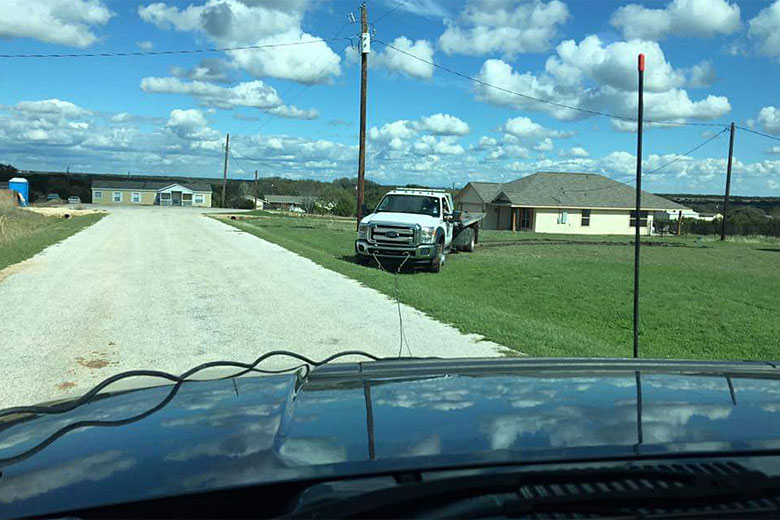
When you purchase your winch, there will be all kinds of information to process. Once the device is secured and tensioned on the front (or back, which is a discussion for later) of your rig, you’ll feel a sense of extra security as you tackle the remote trails. All is not as it seems, though.
I’m reminded of a past trip to the desert with some friends. I didn’t have a full recovery kit in my truck as the build was relatively new, but I did have my winch. I expressed concern over a particular trail and some mud associated with it. My friend asked me, “why can’t you just use the winch if you get stuck?” I’m not sure how many of you have been to the desert, but there’s not exactly a lot of options for a winch recovery in the absence of another vehicle. Regardless of where you intend to use the thing, you’ll need a few pieces of gear before you’re ready for that first pull.
I’m not going to discuss recovery straps ad nauseam in this series. We’ve discussed the need for a tree trunk protector in the past, but I think it’s never a bad time to reiterate that point. I would say getting one of these needs to be a priority. Next, grab a winch extension strap. These two things, combined with the items in the first series, will be tremendous in setting up a successful winch recovery.
There are tons of other very useful products out there like the Pull-Pal Sand Anchor and the Deadman Off-Road Earth Anchor. These systems can be used to self-recover in situations where there may be no other options. On this same line, I recommend using a spare tire and shovel if you’re in dire straights. Using a tire buried in the mud or sand will definitely get you out, but it will likely destroy the tire or rim. Thinking like this will get you the anchor point you need, just remember to never hook the cable back onto itself or you’ll also destroy the cable.
Some Assembly Required
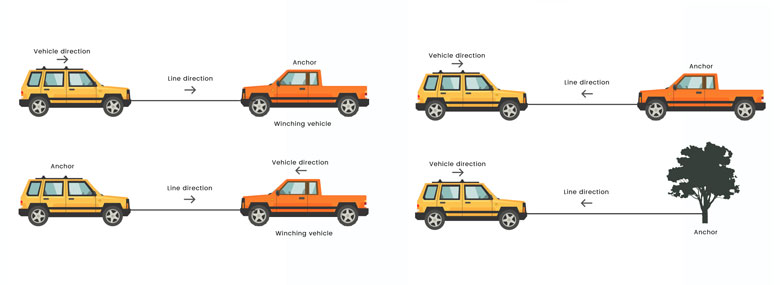
Alright, let’s talk about the basics of a winch pull. The graphic above illustrates which pieces of this puzzle are the anchors and which are the other moving components. So we aren’t repeating ourselves too much, I’ll briefly touch on the same steps from the recovery article, but we need to address some other important techniques after you’re set up. First, determine when it’s time to use the winch. If forward or reverse progress has come to a halt, we need to attempt a recovery. In relatively shallow mud holes and on sandy or otherwise flat surfaces, the snatch strap is the king of recovery options. Inclines that threaten to pitch your vehicle to the side, deeper mud holes, or impossibly difficult traverses are all great candidates for a winch.
Now you need to determine anchor points. The goal here is to locate something that’s more immovable than your own vehicle. Trees, boulders and larger trucks are ideal, but a ground anchor from one of the previously mentioned companies can work as well. Get creative here, but use common sense. Remember that 10,000 lb. rating on your winch body isn’t an indicator of “cool-guy points.” It’s the number of pounds your winch cable will have stored up to cause havoc when something goes wrong.
Using straps or anchors, secure your winch line to the point of salvation. Whenever possible, use the clutch lever to pull your winch line out. This saves your battery a bit of heartache and keeps your winch cool. It’s typically fine to feed the line with your controller if you have a large bull bar or a concealed setup. One point I like to reference every time you guys read one of my articles is that you should never use a tow ball as a recovery point. There may be new visitors to the site that haven’t heard about this and this is evidenced by new videos online showing people finding this out the hard way.
Moving on, once you’re all hooked up, add some form of a dampener to the winch line. Most recovery kits include at least one of these, but if you don’t have one it’s fine to use a wet towel or something similar. Some people use the empty bag for their recovery gear. Anything you can use to slow a winch cable flying through the air is a good safety measure.
You’ll want to place the dampener at the hooked end (although it’s great to include a second dampener on the opposite end of the line as well. There’s not a common point of failure when a winch line gives up, but the most kinetic energy is stored at the very ends of the winch line.
Bring tension up slowly with the controller. If you’re working in a team, delegate one person to guide the operation. This needs to be the most experienced user whenever possible. Using hand signals or radios, determine your set of commands and get to pulling. Keep everyone well clear of the operation, as there’s a lot of force at work.
I want to make a special point about radios and wireless winch controllers. It’s unlikely that a two-way radio of any variety will interfere with your wireless winching operation, but try to be mindful of other radio devices in the area. I can successfully replicate the actuation of a couple cheaper winches with wireless controllers using my 2-meter ham radio. That’s scary stuff when you consider putting your hands around a cable spool on one of these monsters.
Pull until the vehicle is free of the obstacle or until you have about 5-6 feet of line left (about 2 meters for countries that haven’t been to the moon) and then reset. For additional pulls, let the vehicle run for a bit to ensure you’re keeping the alternator working on your battery. If you’re all done, release tension on the cable and have someone help you spool the line back in. Otherwise, pull it back out and reset. This is a good time to reevaluate your situation to make sure you don’t need to move or reset your anchor. Give your equipment a quick once-over to make sure nothing is getting frayed or marred by these forces and get back to it.
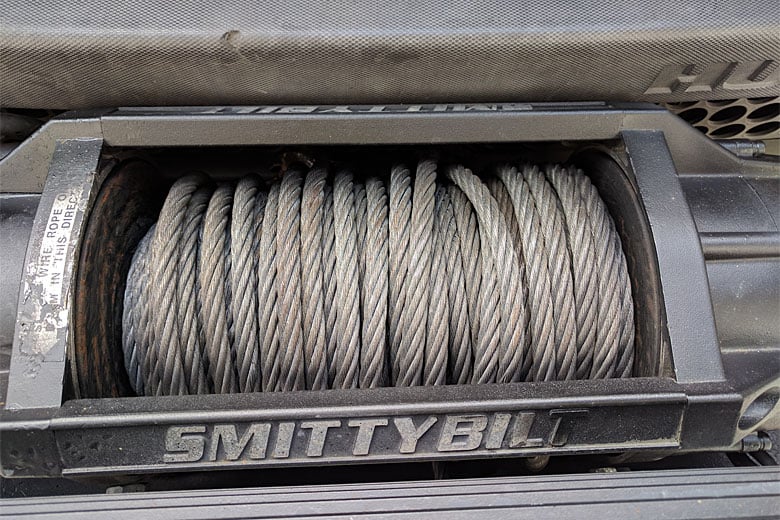
I’ve mentioned in the past that we typically wait until the end of the day or weekend to reset our winch lines. This is pretty standard practice, but if you’re planning on an expedition that’s a week or longer, then you’ll want to take a more regimented approach. If getting stuck a lot isn’t something you anticipate, then take five minutes to reset the winch line while your travel companions clean up around the vehicle. Otherwise, you’ll need to do it when you get to camp in the evening. The important thing to bear in mind is that your cable is properly reset and isn’t left in the “Rat’s Nest” configuration for more than a day or two.
Doubling Down
Now that we’ve covered simple straight line pulls, let’s touch on a slightly more advanced technique. There are situations when another vehicle may not be able to safely pull from the front or back. Using an anchor point in the right location, a vehicle can pull another with a snatch block. A snatch block is a massively strong pulley that reroutes the cable on a winch pull. Placing the vehicles side-by-side allows one vehicle to pull another without having to be in a direct line with their winch. Get your geometry pants on for this kind of pull. As most kits will include something like a 25,000 lb. rated snatch block, it’s a good idea to know how to use them. The most simple application is to pull from other angles that would be impossible to perform in a straight line.
Nothing really changes here with regard to technique. Use straps and dampeners where it makes logical sense, proceed slowly and keep everyone clear of the operation. Seems easy enough, until we consider that little gem that made SpaceX possible, physics. Feeding the line out and reversing its direction with a pulley does something magical, albeit extremely dangerous. Physics says it essentially doubles the pulling force and halves the speed of the winch. Keep these properties in mind when using a snatch block or you could end up destroying a recovery point or sending objects soaring through the air at a calamitous rate of speed.
Conclusions and Considerations with the Winch
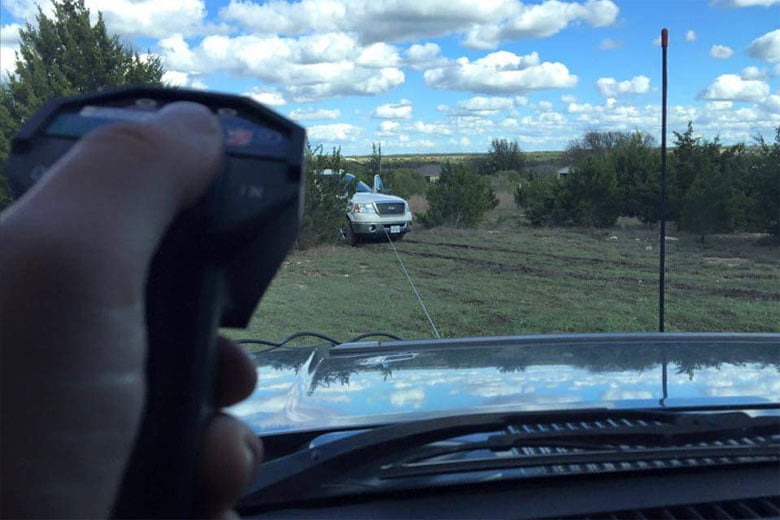
There’s a lot of misinformation in the off-road world. Fortunately, we’re catching up through the use of mediums like YouTube and manufacturer involvement. There are groups out there you can follow on online that have excellent advice on four-wheeling. I’m a fan of Expedition Overland, All 4 Adventure and even an old abandoned channel called MadMatt 4WD. There’s a wealth of information available on the web. I encourage you to locate some of the groups that appeal to you, that don’t have a ton of “that’s really stupid” comments on their videos. Additionally, many companies like Warn and ARB provide training videos on their websites, as well as instructional documentation with their products.
If at any time something becomes uncomfortable during a recovery, you need to let someone know. Even experienced off-road adventurers can become distracted or may not see the whole picture. Fatigue, hunger and stress can cause very dangerous situations while you’re on the trail. I’ve had countless recoveries where I anticipated being back at camp in 20 minutes and instead, had to problem solve for hours. It’s important to discuss everything thoroughly but avoid analysis paralysis. This whole endeavor is about finding the limitations of our vehicles and expanding our confidence by achieving things we never even considered possible.
We’re going to be talking about some more advanced winching applications in the final article of the series, so you’ll want to check back for that. This piece was to cover some very basic practices before we go into the insanity you can expect when you find the right travel companions. I love a good debate and encourage anyone else with experience to chime in down below here. Also if you’ve got questions, I’m happy to help.
Editor-in-Chief’s Note: Derek Gill has been a Plank Owner here at ITS from the beginning and has an extensive background in healthcare, pharmaceutical research and technical diving. He’s been certified in SCUBA since 2000 and diving technical/CCR since 2010. He speaks several languages including Russian and Spanish as well as several computer languages. These combined skills have opened the door to more creative ventures in Network Security and Physical Security consulting. Derek is a veteran of the US Navy and a former Navy Corpsman who worked alongside the US Marine Corps. His military nickname, “Witch Doctor,” has stuck with him ever since and it can now be found across many internet forums where he takes pride in trolling sensational zealots from multiple industries.






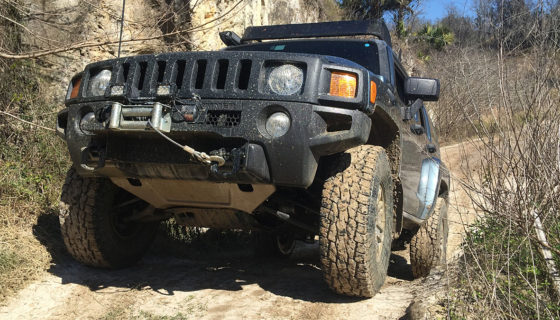
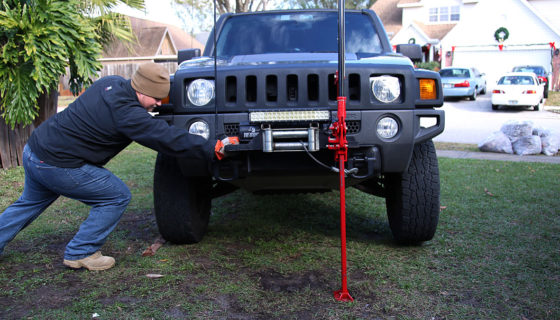
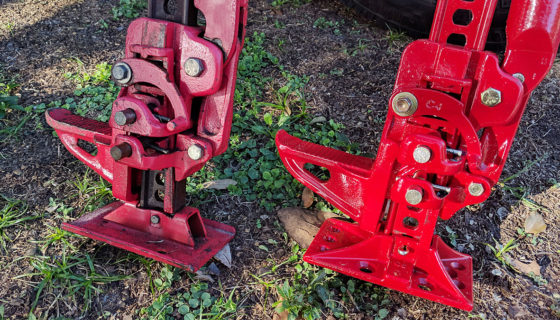
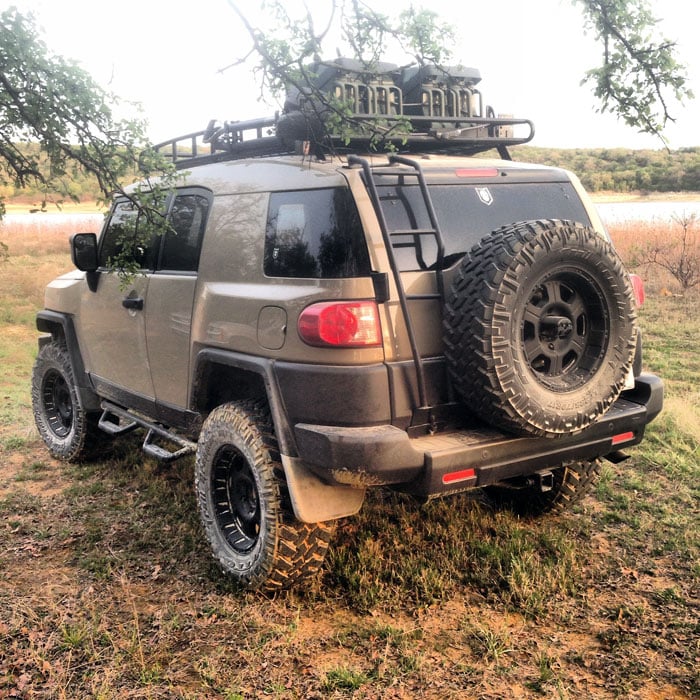

Discussion